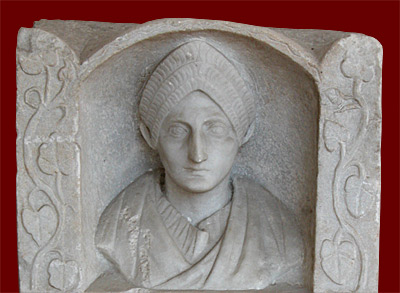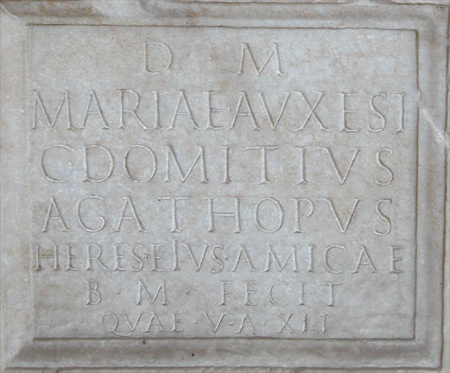 Funerary Portrait of Maria Auxesis (complete monument) |
This relief portrait of Maria Auxesis, framed between borders of clinging ivy, appears on an elegantly inscribed marble funerary altar discovered along the Via Labicana in Rome. Her portrayal is conventional for a respectable matrona of the Trajanic period (98-117 CE) in regard to her domed hairstyle, severe expression, and concealing clothing (compare the hairstyle and stern face of the Empress Plotina and this stola-clad matrona). However, this severe representation is at odds with the reference to her as amica by her heir and dedicator of the altar, Gaius Domitius Agathopus. Her nomen, Maria, is probably taken from the gens Maria, one of whose members freed her; her cognomen is Greek, indicating an eastern origin for her or her parents. Having escaped mortal childhood diseases and avoided death in pregnancy, Auxesis lived to a good age for her time. |
 |
|
| D[is] M[anibus] | |
| MARIAE AVXESI | |
| C[aius] DOMITIVS | |
| AGATHOPVS | |
| HERES EIVS AMICAE | |
| B[ene] M[erenti] [hoc monumentum] FECIT | |
| QVAE V[ixit] A[nnis] XLI |
Click on the underlined words for translation aids and commentary, which will appear in a small window. Close the small window after each use.